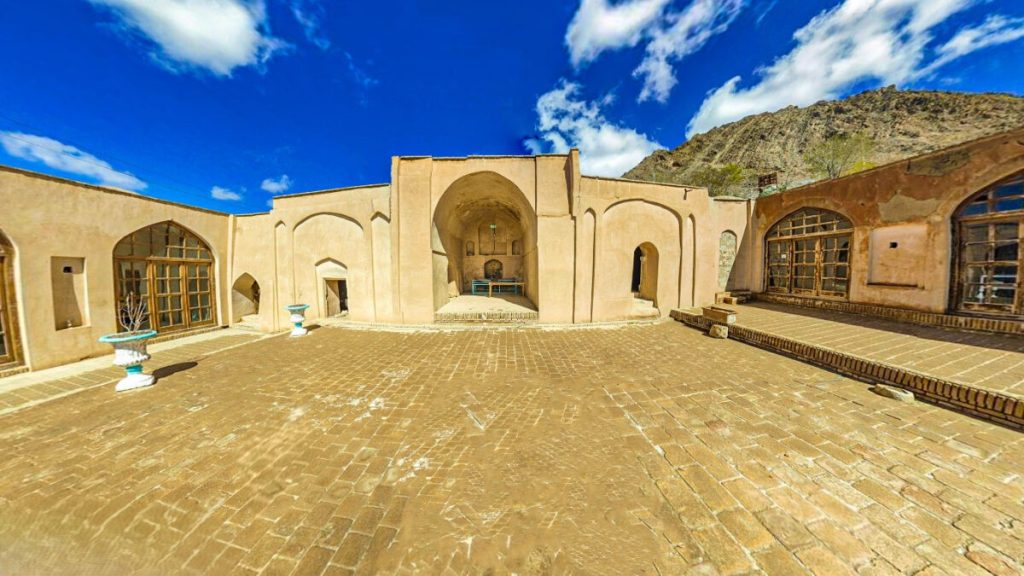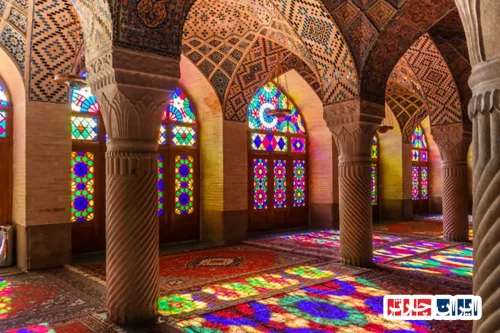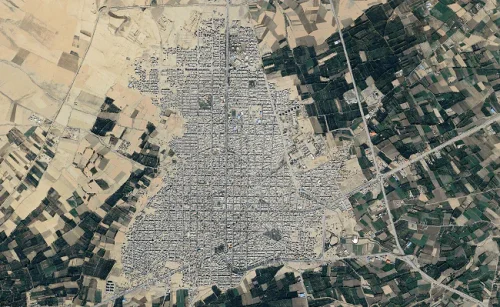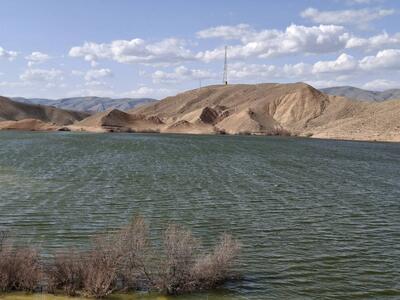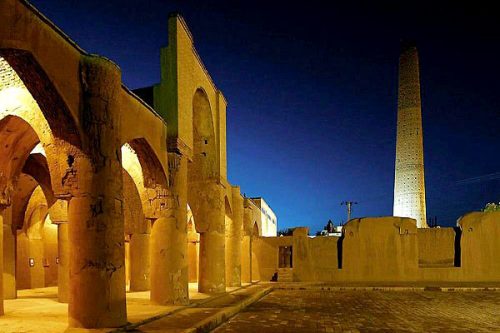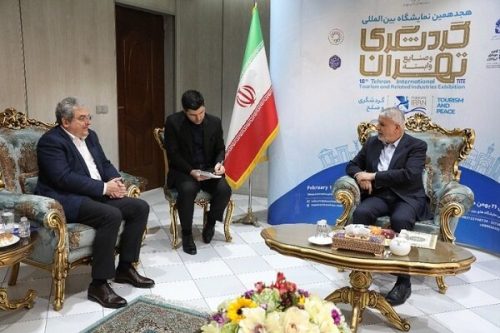Private Sector Joins Forces with Fars Cultural Heritage Directorate for Historical Heritage Monitoring
Fars province, with over three thousand nationally registered immovable heritage sites, is considered one of Iran’s cultural, historical, and civilizational treasures. As a region possessing a valuable repository of ancient and Islamic Iranian history and civilization, Fars plays a significant role in preserving the nation’s cultural heritage. To optimize the utilization of this invaluable capacity, Iran Charter has teamed up with the Fars Cultural Heritage Directorate to conduct balanced and effective monitoring and restoration of historical artifacts in collaboration with the Fars Cultural Restoration Craft Union.
The Director General of Fars Cultural Heritage announced that due to existing governmental resource limitations, continuous and timely monitoring and restoration of historical artifacts is infeasible. Therefore, Iran Charter ensures the proper maintenance and preservation of cultural heritage by leveraging the capabilities and specialties of the provincial restoration crafts union.
This cooperation not only aids in better and more accurate monitoring of Fars’ historical heritage but also facilitates the timely restoration of these valuable artifacts. With the collaboration of Iran Charter, it is anticipated that specialists in restoration will assess the current state of historical artifacts and, based on monitored results, plan for their restoration and preservation. This initiative is a significant step towards preserving the cultural and historical identity of Fars province and Iran, demonstrating both the government’s and private sector’s commitment to safeguarding the country’s cultural heritage.
The Role of the Private Sector in Monitoring Historical Heritage: Key Contributions
The private sector collaborates with the Cultural Heritage Administration of Fars, fundamentally contributing to monitoring and preserving the province’s historical heritage. This partnership aims to more effectively utilize private sector capacities and provide the necessary expertise for the maintenance and restoration of historical artefacts. Given the large number of registered heritage sites in Fars, leveraging private sector capabilities as a strategic partner is crucial for preserving the cultural and historical identity of the province.
Private Sector and Cultural Heritage Administration Cooperation in Preservation Efforts
The memorandum of understanding signed between the private sector and the Cultural Heritage Administration of Fars lays the foundation for sustainable and effective collaboration in maintaining and restoring the province’s historical artefacts. This cooperation aims to create a regular and precise monitoring process to ensure the preservation and enhancement of the current state of historical sites and prevent their deterioration. The private sector, utilizing its expertise and financial resources, has played a vital role in this area.
The Importance of the Private Sector in Protecting Fars’s Cultural Heritage
Protecting cultural heritage requires coordinated and unified efforts between governmental entities and the private sector. By providing financial resources, technical expertise, and management skills, the private sector can significantly impact the preservation and restoration of historical artefacts in Fars Province. In addition, private sector involvement increases officials’ motivation and emphasizes the importance of cultural heritage preservation.
Utilizing Private Sector Capabilities in Monitoring and Restoring Fars’s Historical Heritage
The private sector can optimize and hasten the monitoring and restoration processes of Fars’s historical heritage by leveraging modern technologies and technical expertise. Using advanced technology in assessing historical artefacts allows for the timely identification of potential issues and necessary restorations. This not only helps preserve the authenticity of historical sites but also prevents high costs of unexpected repairs.
Private Sector and Restorers Association Agreement with Fars’s Cultural Heritage Administration
The agreement signed between the private sector and the Restorers Association of Fars has been an effective step in creating a coordinated and organized monitoring and restoration system for the province’s historical sites. This agreement aims to define roles, responsibilities, and shared goals in cultural heritage preservation. Direct cooperation with the Restorers Association ensures the proper execution of restoration processes and the maintenance of historical artefacts’ quality.
Challenges of Employing the Private Sector for Monitoring Fars’s Cultural Heritage
While collaboration with the private sector offers many benefits, its implementation is not without challenges. Some of these challenges include coordinating among various entities, ensuring the quality of services provided, and aligning with national and international standards. To overcome these challenges, it is necessary to design precise frameworks and continuously monitor the private sector’s performance.
Successful Examples of Private Sector Collaboration with Fars’s Cultural Heritage Administration
In recent years, several successful projects have been executed through the collaboration between the private sector and Fars’s Cultural Heritage Administration. These projects include the thorough monitoring of the Bishapur archaeological site, the restoration of Naqsh-e Rustam, and the preservation of Persepolis. These examples demonstrate the positive impact of private sector collaboration on the protection and maintenance of Fars’s cultural heritage.
Enhancing Quality of Historical Heritage Monitoring through Private Sector Participation in Fars
The involvement of the private sector in monitoring Fars’s historical heritage has greatly contributed to improving the quality of these assessments. Employing advanced equipment and modern techniques to evaluate artefacts’ conditions facilitates more accurate problem diagnosis and the provision of more effective solutions. This quality enhancement, in turn, leads to better and more efficient preservation of Fars’s cultural heritage.
The Future of Private Sector and Cultural Heritage Centers Collaboration in Fars Province
The future of collaboration between the private sector and Fars’s Cultural Heritage Administration looks promising. As this cooperation expands and relationships between entities deepen, it is anticipated that the protection and maintenance of Fars’s cultural heritage will reach a higher level. Additionally, this collaboration can serve as a model for other provinces in the country to preserve national cultural heritage.
News Source : https://www.irna.ir/news/85683864/%D8%A8%D8%AE%D8%B4-%D8%AE%D8%B5%D9%88%D8%B5%DB%8C-%D8%A8%D8%B1%D8%A7%DB%8C-%D9%BE%D8%A7%DB%8C%D8%B4-%D9%85%DB%8C%D8%B1%D8%A7%D8%AB-%D8%AA%D8%A7%D8%B1%DB%8C%D8%AE%DB%8C-%D8%A8%D9%87-%DA%A9%D9%85%DA%A9-%D8%A7%D8%AF%D8%A7%D8%B1%D9%87-%DA%A9%D9%84-%D9%85%DB%8C%D8%B1%D8%A7%D8%AB-%D9%81%D8%B1%D9%87%D9%86%DA%AF%DB%8C

FAQ
- How does the private sector participate in the monitoring of Fars’s historical heritage?
- The private sector works with the Restorers Association of Fars to utilize its capacity and resources for inspecting, monitoring, and restoring the province’s historical artefacts.
- What does the memorandum between the Cultural Heritage Administration and the Restorers Association of Fars include?
- The memorandum covers the monitoring and maintenance of historical artefacts, creating a database of their condition, and enabling timely restorations.
- Why does the Cultural Heritage Administration of Fars need collaboration with the private sector?
- Due to governmental limitations, the Cultural Heritage Administration is unable to continuously and timely monitor and restore artefacts, making collaboration with the private sector essential.
- What are the main objectives of the historical heritage monitoring memorandum?
- The main objectives include the monitoring and maintenance of historical artefacts, creating a database of their condition, and providing the possibility for timely restorations.
- How is a database of the condition of historical artefacts created?
- After the inspection and monitoring of buildings, protective and restorative reports are prepared and this information is stored in a central database.
- What highlights have been included in the reports provided so far?
- The reports provided include global sites such as Bishapur, Naqsh-e Rustam, Persepolis, Museum of Pars, and Arg of Karim Khan.
- What is the importance of public and private sector collaboration in protecting cultural heritage?
- This collaboration leads to better monitoring, timely restoration, and maintenance of historical artefacts, thereby achieving more effective protection of Fars’s cultural heritage.
- What has the Director-General of Fars’s Cultural Heritage said about this collaboration?
- The Director-General of Fars’s Cultural Heritage emphasized that leveraging the capabilities of the Restorers Association is a step forward in protecting the province’s cultural heritage.
- Approximately what percentage of Iran’s historical artefacts are located in Fars Province?
- About 10 percent of Iran’s historical artefacts are located in Fars Province.
- What governmental limitations exist in monitoring and restoring cultural heritage?
- Financial and human resource limitations prevent continuous and timely monitoring and restoration of artefacts by the government.
- What is the role of the Restorers Association of Fars in executing the memorandum?
- The Restorers Association is responsible for inspecting, monitoring, and preparing reports on the condition of historical artefacts.
- How many nationally registered immovable heritage sites are there in Fars Province?
- Fars Province has more than three thousand nationally registered immovable heritage sites.
- What classifications are used for monitoring and maintaining historical artefacts?
- Classifications include monitoring national, global, and valuable provincial sites.
- Which historical sites have been monitored so far?
- The historical sites monitored include Bishapur, Naqsh-e Rustam, Persepolis, Museum of Pars, and Arg of Karim Khan.
- How are restoration priorities determined?
- Restoration priorities are determined based on monitored data and expert evaluations by the cultural heritage deputy.
- What challenges exist in managing and monitoring all historical artefacts in Fars Province?
- Managing and monitoring all historical artefacts poses challenges due to their large number and geographical spread over 122,000 km and 37 counties.
- What benefits are expected for Fars’s cultural heritage from this collaboration?
- It is expected that Fars’s cultural heritage will benefit from better monitoring and timely restoration, leading to improved protection and maintenance, thus preserving their historical value.

